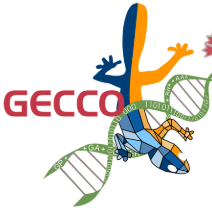Very recently, the first mathematical runtime analyses of the multi-objective evolutionary optimizer NSGA-II have been conducted (AAAI 2022, GECCO 2022 (to appear), arxiv 2022). We continue this line of research with a first runtime analysis of this algorithm on a benchmark problem consisting of two multimodal objectives. We prove that if the population size $N$ is at least four times the size of the Pareto front, then the NSGA-II with four different ways to select parents and bit-wise mutation optimizes the OneJumpZeroJump benchmark with jump size~$2 \le k \le n/4$ in time $O(N n^k)$. When using fast mutation, a recently proposed heavy-tailed mutation operator, this guarantee improves by a factor of $k^{\Omega(k)}$. Overall, this work shows that the NSGA-II copes with the local optima of the OneJumpZeroJump problem at least as well as the global SEMO algorithm.
翻译:最近,对多目标进化优化型NSGA-II进行了第一次数学运行时间分析(AAAI 2022, GECCO 2022(将出现), arxiv 2022)。我们继续这一研究线,对由两个多式联运目标组成的基准问题进行首次运行分析。我们证明,如果人口规模至少是Pareto前线规模的四倍,那么,国家地球科学应用II以四种不同方式选择父母和从位角度进行突变,优化一个JumpZeroJum的基准,其跳幅大小为2美元/le k k\le n/4美元,其时间为$O(n)k)。在使用快速突变时,即最近提议的重尾变操作者,这一保证通过一个 $k ⁇ Omega (k) 元的系数得到改进。总体来说,这项工作表明,国家地球科学应用II 应对OneJumoJeroJum 问题的当地选择,至少是全球SEMO算法。



